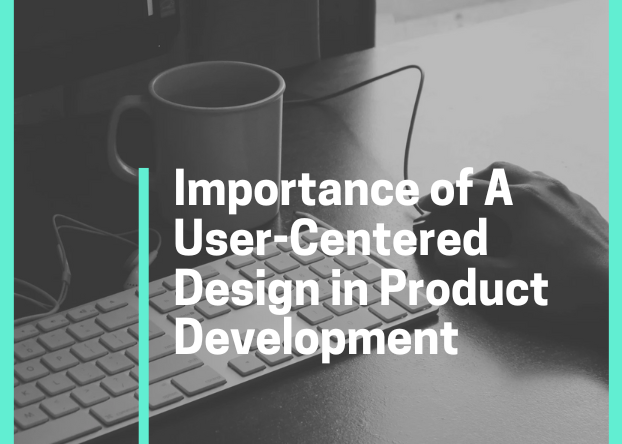
Importance of A User-Centered Design in Product Development
Even the most innovative product ideas can fail without a user-centered design approach. Microsoft Kin, a short-lived mobile phone released in 2010, serves as a stark reminder of the consequences of neglecting user needs. Unable to install third-party apps, the Kin quickly met with market indifference. To ensure product success, it’s essential to prioritize user experience throughout the development process.
Creating a product requires a deep understanding of the end-user—their needs, preferences, and pain points. This is where the role of User-Centered Design (UCD) lies. UCD is a design philosophy and process that places the user at the heart of product development, ensuring that the final product is not only functional but also intuitive and enjoyable to use.
What is User-Centered Design?
User-Centered Design is a design approach that focuses on the users and their needs at every stage of the product development process. Unlike traditional design methods, which might prioritize aesthetics or technological capabilities, UCD emphasizes the importance of usability and user satisfaction. The goal is to create products that are not just usable but delightful, by deeply understanding and addressing the specific requirements of the target audience.
The UCD process typically involves four key stages
- Research- Understanding the user’s needs, behaviors, and pain points through interviews, surveys, and observations.
- Design- Creating prototypes and wireframes based on the research findings, ensuring the design aligns with user expectations.
- Testing- Involving users in the evaluation of the design through usability testing, gathering feedback to refine and improve the product.
- Implementation- Developing the final product with ongoing user feedback, ensuring the design continues to meet user needs.
Why is User-Centered Design Important in Product Development?
- Improves Usability- Products developed with a user-centered approach are more intuitive and easier to use. By focusing on the user’s needs from the start, designers can create interfaces that are logical, straightforward, and efficient, reducing the learning curve for new users.
- Enhances User Satisfaction- When users feel that a product was designed with their needs in mind, they are more likely to have a positive experience. This leads to higher satisfaction, better reviews, and increased customer loyalty.
- Reduces Development Costs- While it may seem that involving users throughout the design process would increase costs, the opposite is often true. By identifying and addressing usability issues early, companies can avoid costly redesigns and fixes later in the development cycle.
- Increases Market Success- A product that is easy to use and meets user needs is more likely to succeed in the market. User-centered products can quickly gain traction, attract positive word-of-mouth, and achieve better user retention rates.
Advantages of Outsourced Product Development
Outsourcing product development is becoming increasingly popular among companies seeking to deliver high-quality products while maintaining cost efficiency. The key advantages of outsourcing product development are as follows-
- Access to Global Expertise- Outsourcing allows companies to tap into a global talent pool. Businesses can make use of the expertise of professionals with experience in diverse industries and technologies by partnering with specialized development firms. This access to a broader range of skills can lead to more innovative solutions and faster development cycles.
- Cost Efficiency- Outsourced product development can significantly reduce costs. Companies save on overheads such as salaries, benefits, infrastructure, and training. Additionally, outsourcing to regions with lower labor costs can further reduce expenses without compromising on quality.
- Focus on Core Competencies- Companies can focus on their core competencies, such as marketing, sales, and business strategy by outsourcing development. This allows internal teams to work on what they do best, while the outsourced partner handles the technical aspects of product development.
- Faster Time-to-Market- With a dedicated team working on product development, companies can accelerate their time-to-market. Outsourced teams often bring established processes and tools that speed up development, helping businesses launch products faster and stay ahead of the competition.
- Scalability and Flexibility- Outsourcing offers scalability, allowing companies to ramp up or down their development efforts based on project needs. This flexibility is particularly valuable in managing fluctuating demands, ensuring that businesses can respond quickly to market changes without the burden of long-term commitments.
- Reduced Risk- Experienced outsourcing partners bring a wealth of knowledge in managing complex projects and mitigating risks. Companies can avoid common pitfalls, ensure regulatory compliance, and deliver a more robust final product by making use of their expertise.
- Continuous Support and Maintenance- Outsourcing product development often includes ongoing support and maintenance services. This ensures that products remain updated, secure, and functional long after the initial launch, providing a seamless experience for end-users.
How User-Centered Design and Outsourced Product Development Work Together
Combining User-Centered Design with outsourced product development can be a powerful strategy. While the outsourcing partner handles the technical execution, the UCD process ensures that the product aligns with user needs and expectations.
Clear communication and collaboration between the in-house team, the outsourcing partner, and end-users are crucial to the success of this approach. Regular feedback loops, iterative testing, and a shared commitment to user satisfaction can lead to the development of products that are both technically sound and user-friendly.
Conclusion
User-Centered Design is essential for creating products that resonate with users, while outsourced product development offers a cost-effective, flexible way to bring these products to market. Companies can achieve a winning combination of innovation, efficiency, and user satisfaction by integrating these two approaches. Adopting UCD principles and making use of outsourced development can be key drivers of success in product development for businesses in the current times.
